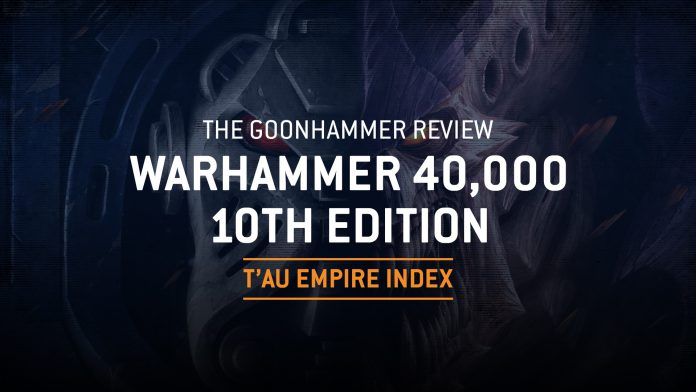The Tau Empire have been a lot of things the last few editions: oppressive boogeymen, then a laughingstock, then oppressive again in three or four different ways, and then a mid-tier army that can still get some good hits in but isn’t a joyless slog to play as or against. So there were a lot of options for their tenth edition incarnation. What we ended up getting is still fundamentally Tau in identity – they aren’t good at punching, the shooting is still brutal, and the mobility granted by having your entire army FLY ifs still there – but implemented in a way that makes them perhaps a more engaging army to play, and requires fewer carve-outs in the core rules to get there.
Thanks, as always, to Games Workshop for providing an advance copy of the index for us to review.
Faction Rule

The T’au Empire army rule is – stop me if you’ve heard this before – For the Greater Good. This version of the ability doesn’t rely on wargear or stratagems, it’s just an innate ability that units have.
The way it works is that a unit, when selected to shoot, can declare that it is Observing an enemy unit, on behalf of a different Tau unit, which is the Guided unit. The Guided unit gets their BS skill improved by 1 when shooting the Observed unit, and worsened by 1 when shooting any other units. Specifically note that this modifies the BS, not the dice roll, so it gets around the +1/-1 caps on hit modifiers, and can stack with abilities such as Heavy weapons. The Observing unit gets nothing, but they’re free to shoot any unit they want, whether it’s been Observed or not.
Note that while the keyword for having FtGG is Tau Empire (ie, the faction) both units chosen need to have the FtGG ability to be chosen to be Guided or Observer. So units such as Kroot and Vespid cannot be used as Observers and also can’t be Guided.
This is an interesting take on the concept – the cleanliness of it is appealing, and it plays well into the Combined Arms methodology of the Tau way of war, but the restrictions will likely make it somewhat challenging to extract maximum value from it. For starters, the Observed unit has to be visible to both the Guided and Observing units. The other big hurdle is that once you Observe, you cannot also be Guided. Then there’s the order of operations, where there is some bookkeeping to handle: each time you select a unit to shoot and use FtGG you need to make note of which unit is Observing. This unit can still shoot later but Observer units cannot be guided and cannot (usually) guide for something else.
So, worst-case, you’re still going to have a few important heavy-hitters clocking people on 2s and 3s, but if you are sufficiently Big Brained about timing and positioning, it can get pretty wild. It’s a fun idea, and undeniably powerful, but not as busted as it might seem at first. There’s also a little bit of BS3+ creeping around the edges of Tau, so there’s some real question about which units even need to be Guided, and whether it’s worth giving up the ability to split fire in those cases.
Vrekais Note: There is a technical RAW argument that “eligible to shoot” units includes units that have already shot. It’s annoying but in my opinion accurate read of the current rules. This oversight in FTGG’s requirements for an observing units means that a unit that has already shot (and possible been guided) would be a valid pick. However I think the intent of the rule is very clearly not meant to let this be the case, and I’d expect this error to be amended by an FAQ quickly. I’ve removed a sentence from the paragraph above that was inadvertently supportive of this interpretation, when it was actually meant to explain one way of doing the observer/guided unit book keeping.
Detachment Rules
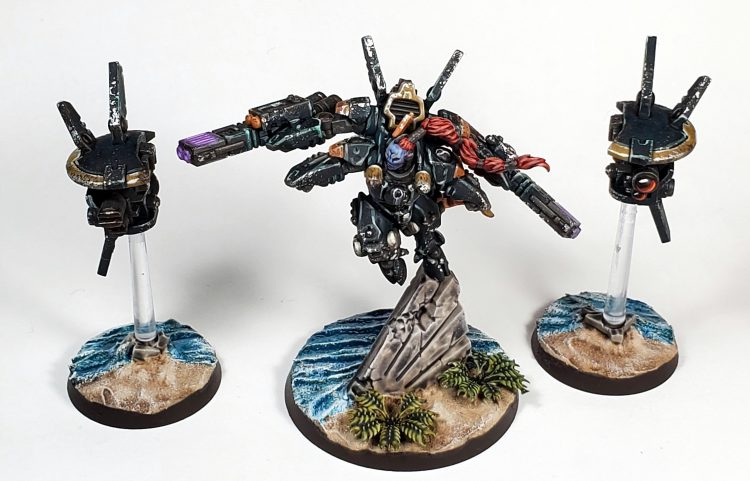
Detachment Ability
Presumably Mont’ka will appear in the Codex, but for now Tau only have access to Kauyon, which is sort of ironic because you’d think the Mont’ka hotheads would be first out of the gate, with the patient hunters holding off until the codex.
The Detachment provided is one of the very few to have any sort of restrictions on it. Fortunately they aren’t particularly onerous, or surprising: if you take Farsight, you can’t also take any Ethereals, and vice versa.
The benefits are blessedly clear, and also seem fairly strong: from turn 3 onward, all Tau units have Sustained Hits 1, which escalates to Sustained Hits 2 if the unit is Guided. Double Exploding Sixes is powerful tech. There’s not really anything to think about with this, or decisions to worry about: do what you were going to do anyway, and receive a Treat. Guide as many units as possible, shoot like a maniac, and hope the dice are with you. With the game’s supposedly decreased lethality, there’s likely to be a sizable chunk of your army remaining on the board by then, to take advantage of your own vastly increased lethality.
Stratagems
Right off the top, yes, jump-shoot-jump is still in here.
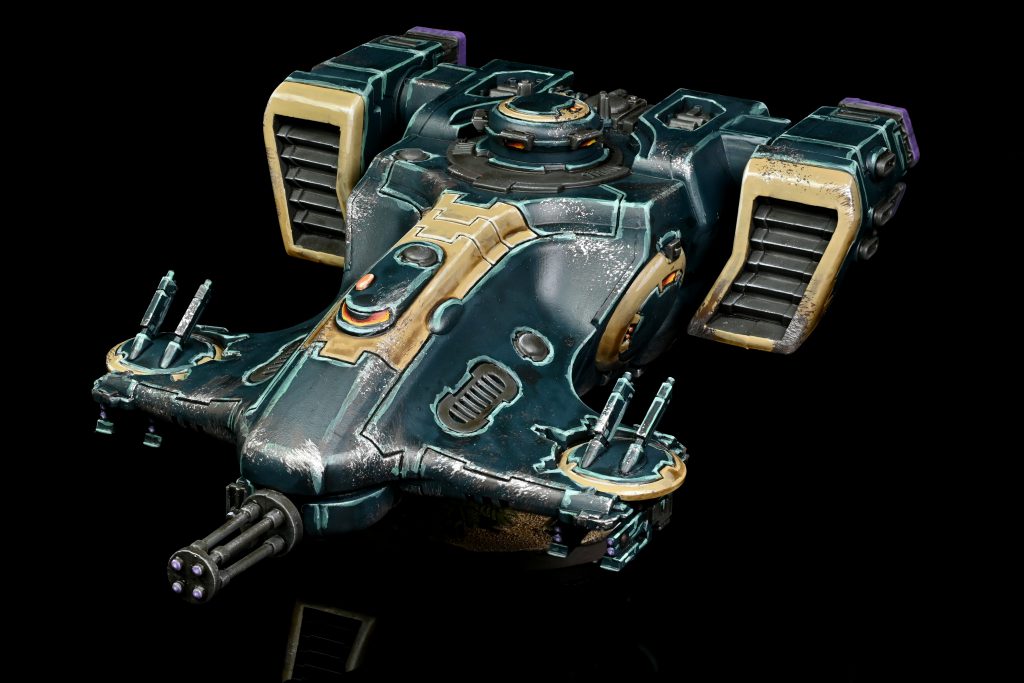
Combat Embarkation is the friend-maker of the stratagems. When an infantry unit is selected as the target of a charge, if they have a transport nearby, they simply get into the transport instead of allowing themselves to be charged. With something like Breachers, who have a new single-mode gun with a 10” range, and Devilfish allowing units to disembark after the tank Advances, this is going to let you project force far up the table and then hide before you get clapped back. Admittedly, the Devilfish will probably die and then you’re right back where you started, but it’s going to be supremely annoying to deal with.
Not that you’re going to have enough CP to leverage this particular Combo Wombo that often, but it pairs well with Point-Blank Ambush, which improves the AP of a unit’s shooting by 1 against targets within 9”. The good news is that you aren’t allowed to use that one until turn 3, so you can save up a few points for it, and also Kauyon will be up when you do, so there’s a very real chance you don’t even need to Embark afterward using it, on account of nothing being left alive in charge range of you.
Enhancements
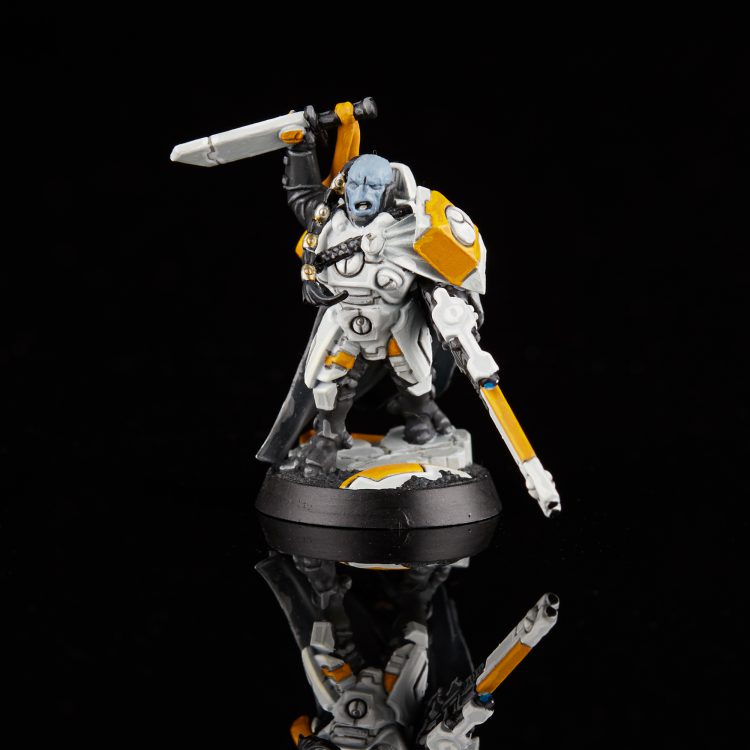
Two of these stand out. The Puretide Engram Neurochip returns, now allowing for the bearer’s unit to use a stratagem a second time in a phase, though you still have to pay the CP for it. The obvious use here is going to be double-overwatching, but a second use of Strike and Fade (does what you’d expect) is unbelievably nasty in Crisis or Riptide heavy lists.
The other good one is probably Exemplar of the Kauyon, allowing the bearer and their unit to get the Kauyon Sustained Hits starting on turn two, rather than three. A Kauyon-ed up Commander attached to a max-size unit of battlesuits, Striking and Fading and scoring bonus hits starting on the second turn, is borderline horrific.
Datasheets
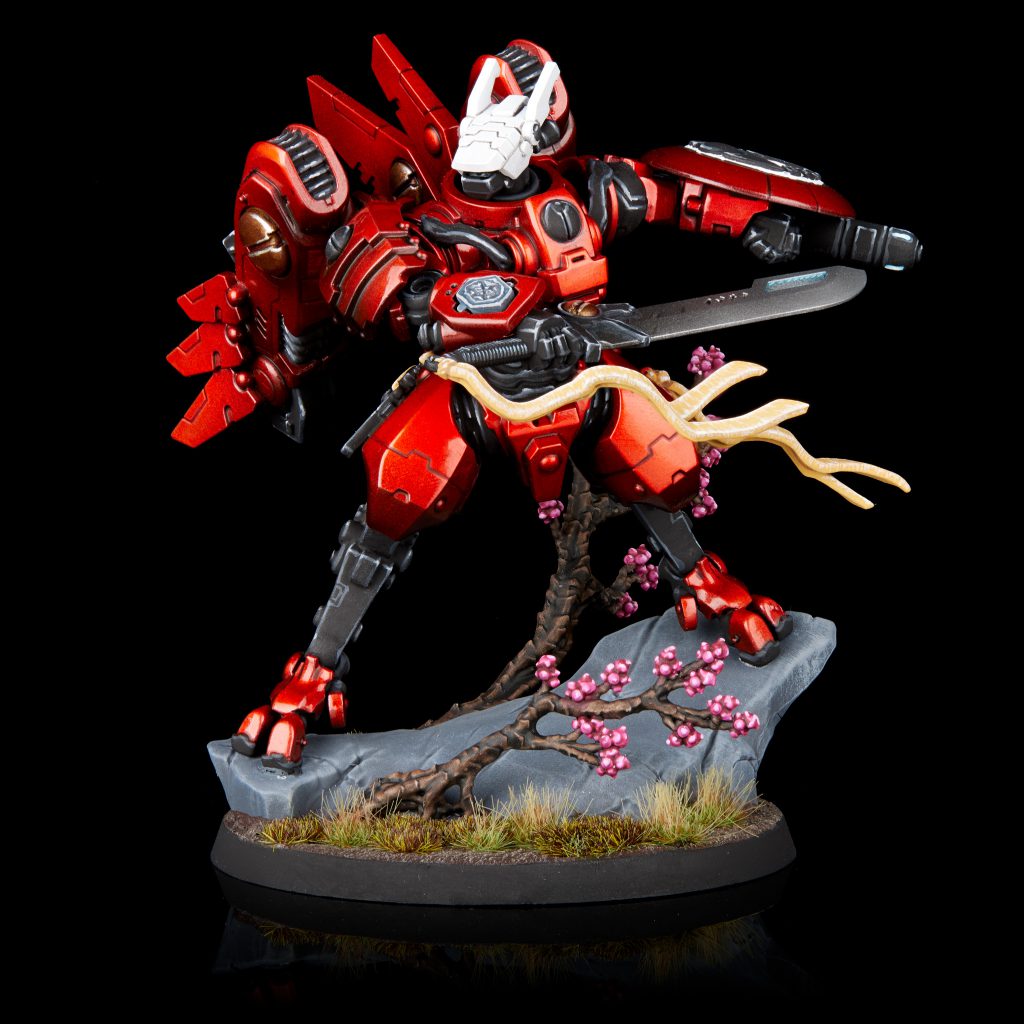
Rejoice, for we have rules for Big Farsight. Unfortunately, he’s kind of a let down. I wouldn’t say he sucks, exactly, but he hasn’t really changed much. He lost one attack (two on the sweep profile), a point of AP on everything, and one wound. Otherwise this is exactly the same as his current datasheet, which is adding insult to injury (or vice versa). I’m not surprised we didn’t get a late-9th sheet for Big Farsight, but to have his 10th index card be essentially a copy-paste of the old rules means that we have to wait again, until the codex, at which point it will have been roughly a full year between the new model and proper new rules. Now that I think about it more, this actually does suck. I just want to know what that little hexagon on his arm does.
Your attachment options are pretty limited compared to something like Space Marines: Crisis commanders of all types can join Crisis squads, and infantry HQs can join Fire Warrior or Breacher squads. That’s all. Some of this is just them being uninventive, some if it is to avoid bonkers unit interactions, but it’s also down to the design of the codex: there just aren’t that many leaders or squads in here, and even fewer combinations of those units that make sense. If you stretch yourself, you could see them having allowed a Crisis Commander to join Broadsides, or an Ethereal with Pathfinders, but they didn’t. It’s hard to find too much fault with what we got, just that it’s somewhat predictable. There are no cool surprises.
Now that the negatives are out of the way, I will direct your attention to the stuff that owns, which is: the rest of the index.
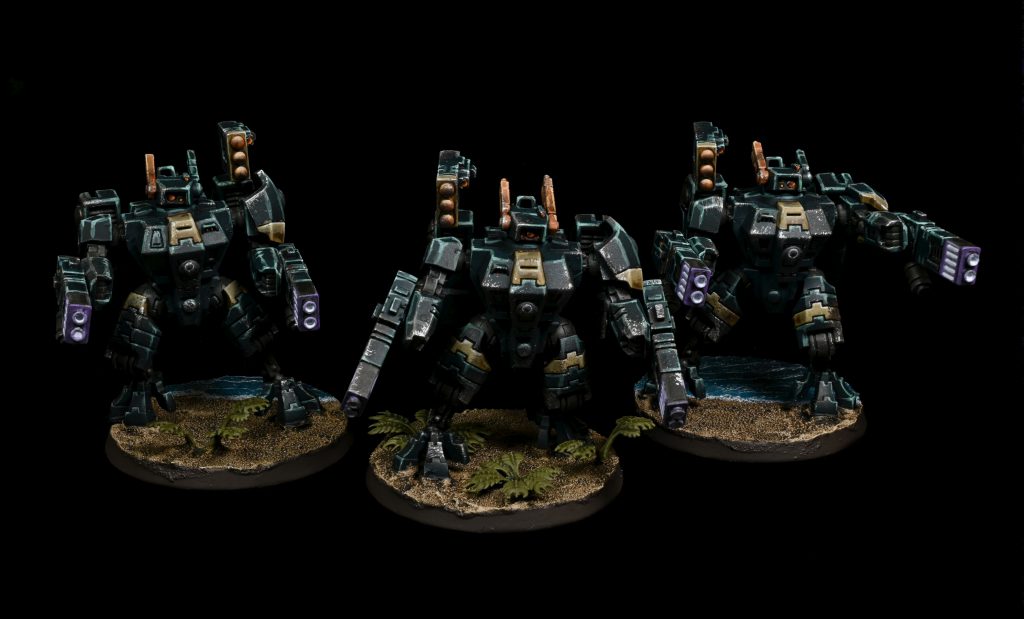
Crisis suits, a unit that has always been a core part of the Tau Experience, are largely unchanged from their 9th edition version, the biggest changes being the removal of Bodyguards as separate datasheet, limiting you to 3 units of 3-6 models, and a general decrease in range and AP on their weapons. The upside is an automatic 6” advance with no rolling, and they’re OC2, rarely seen outside of Battleline. Shield generators seem like a no-brainer for a 4++, but there’s going to be a lot of ink spilled about the relative value of taking a support system (See Biggest Changes, below) and two guns, versus filling all three non-shield hardpoints with Cyclic Ion Blasters.
Battlesuit commanders still come in three flavors – four, if you count Farsight – and have their own unique buffs they impart to a unit they’re leading. The Coldstar may be the best of the lot, boosting the attached unit’s movement to 12” (from 10”) and giving all their weapons ASSAULT. The result being a unit of 4-7 robots jumping 18 inches and cutting loose with a quantity of weaponry. Technically you can take 10 commanders now – three of each, plus Farsight – but with Bodyguards gone you’re limited to three squads they can be attached to.
The humble 50 point Cadre Fireblade might be the MVP of cheap Leaders, though. His abilities are simple: attach him to a squad of Fire Warriors or Breachers, and get +1 shots on each of their ranged weapons. A unit of Breachers is now dealing 30 shots. In the interests of causing trouble, why not attach 2 gun drones to the leader, and two more to the squad sergeant, which is allowed (realistically you still want a Guardian Drone here, so it’s likely to only be 3 gun drones, but work with me here). Each drone has a twin-linked Pulse Carbine good for 2 shots, which goes up to 3. These aren’t great shots – S5 and no AP, though they do re-roll wounds – but getting 12 of them on top of the 30 from the Breachers’ shotguns might make the difference between forcing a unit to take Battleshock and obliterating them outright.
Generally speaking, this is just a straightforward port of the 9th edition data sheets, to make them work in 10th. Auras became Abilities, weapons all lost some AP, every unit has a weird little Bit it can do, but mostly it’s the same as before. Fire Warriors are Fire Warriors, Broadsides still chuck rail, and the Ion Cannon on the Hammerhead is never going to get used, even though it’s kind of good now.
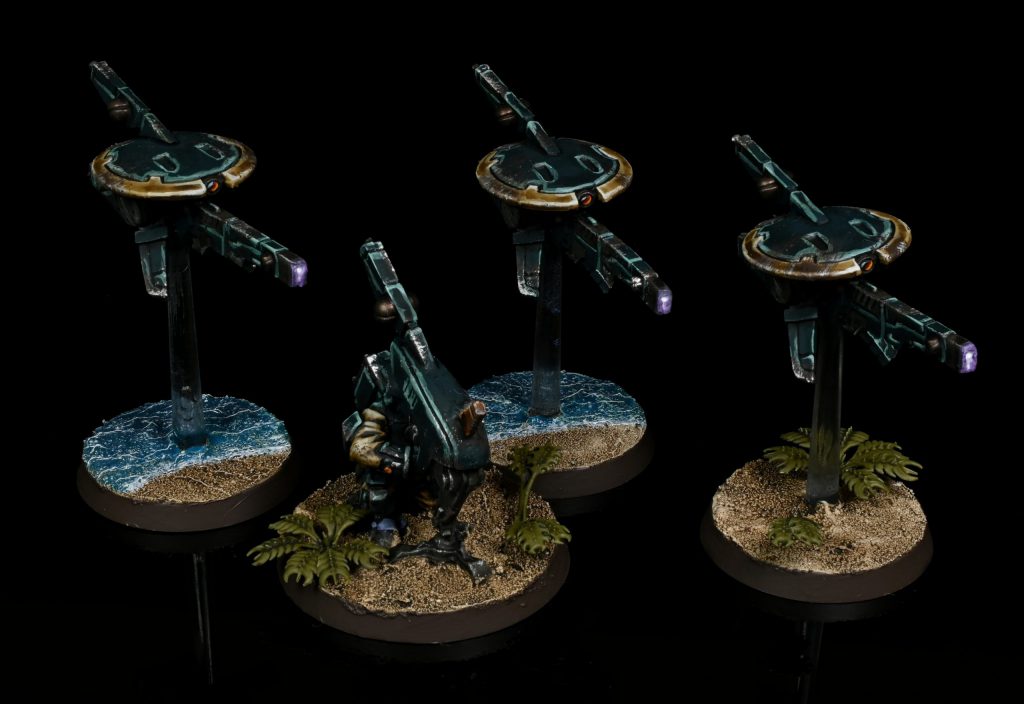
The mechanics of the army are all new and very cool – Markerlights and Drones are the biggest changes, which we’ll cover later – but for the most part the datasheets are a direct translation that makes them function under 10th’s overarching framework, and not much more. Given that the T’au Empire codex is on the roadmap for next Spring, making this an even more ephemeral artifact than most codexes already are, that’s probably all they needed to be. It certainly helps that it looks like it’ll be fun as hell to play.
Five Coolest Units
- They may not seem terribly exciting, but Breachers hitting on 3s natively is fun. They can either act as Observers for another squad, and both hit at BS3+, or you can juice them all the way to a 2+. With a Fireblade attached, that’s 30 shots at S6 and AP-1. Also, if they’re shooting at something on an objective, they re-roll all wounds. Very glad to own 40 of these.
- Piranhas are cool now. The datasheet is fine, I guess, but Drone Harassment is a hilarious ability. Pick an enemy unit within 12” and buzz it with drones, which is so irritating that the unit takes a Battleshock test. I love the image of bonking guys with drones so hard they forget to capture an objective, and in practical terms it’s also a strong utility play.
- They explicitly aren’t part of a unit anymore (with one exception: Tactical Drone Squadrons do exist, but are not worth taking), but the changes to Drones are cool enough to warrant inclusion here. A shield drone now gives a model an extra wound, which means 10W Broadsides and 6W Crisis are on the table. Weaponized drones give the bearer an extra gun: missile drones have the only missile pods that keep their AP-2, and gun drones are just hovering pulse carbines. The real standout here is the Guardian Drone, which attaches to a Fire Warrior or Breacher sergeant and forces a -1 on incoming wound rolls to the squad. For a 10-model T3/W1 unit, this is a huge buff to survivability, and feels like an auto-take. With an attached Ethereal (see below), they may even survive a round of shooting.
- Ethereals can be whacked into a unit to give them a 5+ Feel No Pain, and every turn they generate a CP on a 4+. This being your only source of CP generation, it seems like a good idea to take a couple of them. That said, don’t bother with the hover drone: they can only attach to units that don’t benefit from the movement boost, and making that unit FLY makes them vulnerable to a whole new type of Anti- weapon.
- The Ghostkeel is worth a look now, after several editions of teetering just on the edge of playability. With Stealth and Lone Operative, it cannot be shot at all from beyond 12”, and within 12” all attempts to shoot it are -1 to hit. The Stealth Drones are tokens now, and spending one of them zeroes out the damage on an attack. With a new 2+ save and T8, along with the same 12 wounds, it’s a hardy little guy. The Cyclic Ion Raker’s Overcharge profile is also one of the few weapons to have not changed at all, and in a world of lower AP, having the same profile as before qualifies as a buff.
Five Biggest changes from 9th
- Drones aren’t real anymore. They’re simply wargear, so big it needs its own token, that buffs the bearer. Not counting as models means they don’t count for Blast, either.
- Markerlights also aren’t real anymore. I mean, they are, but the thing they used to do – improve hit rolls – is part of the Observer/Guided mechanic. Markerlights just make Guided units ignore cover, and do nothing if the bearer isn’t Observing.
- Smart missiles are trash. No AP, fewer shots, and they can’t ignore the Indirect penalties, unlike apparently half of the other indirect weapons in the game. Sad!
- Support systems have been flattened. Instead of ATSes and EWOs and whatnot, you simply get “Battlesuit Support System” and “Weapon Support System”. These grant either fall back and shoot, or ignore modifiers when shooting, respectively. It’s not the worst change to make, and those are both useful buffs, though also somewhat interchangeable – you can either fall back out of combat and shoot normally, or not fall back and shoot anyway, ignoring the Big Guns Never Tire hit penalty.
- Battlesuits aren’t INFANTRY anymore, they’re a combination of VEHICLE and WALKER. This will impact how you interact with terrain, as well as Anti- weapons. It’s a logical enough change to make, but this is bad for a couple of reasons, not the least of which is that Broadsides, my large rambunctious sons, can no longer bust through walls like the big strong doofuses they are. It’s also good in some ways: anti-infantry being more common than anti-vehicle, retaining access to Big Guns Never Tire (which otherwise would have been lost along with the Battlesuit rule), and making Hazardous weapons deal 3MW instead of killing a model outright. In conclusion, battlesuits are a land of contrasts.
What’s fun about this – and this is broadly true of all non-Space Marine Indexes – is that with subfactions gone, every named commander has the same faction keyword: they’re all simply T’au Empire. This means that Farsight, Shadowsun, and Longstrike can all ride or die together. I’d like to think this is meant to represent the empire coming together in their hour of need, but it’s likely just a side effect of cleaning up the faction mechanics.
Wrap Up
I don’t think this is a 70% win rate faction. There isn’t enough S10+ shooting to punish the higher-Toughness meta that may well develop, no melee prowess at all, FLY got worse, and there are enough Anti-Vehicle weapons that the changes to battlesuit keywords may present a problem – even with a shield, Crisis suits have a Terminator-equivalent defense statline, which most armies will be tooling up to handle. I also don’t see this as a 25% win rate army. It has the tools to either succeed or get flattened based on the mission and matchup, without the outcome being a foregone conclusion. Put aside the Reign of Terror, and look at the game from a point of view of serene objectivity, and this is sort of exactly where you want an army to be. Solid B-tier.
The faction rule is going to reward high-skill play while still offering utility to anyone and being nearly impossible to totally shut down, and the detachment rule is easy to remember and good enough that with some lucky dice you’ll be triple-six railgunning your way through anything on the table.
Like most of the best army lists, this one suffers from the problem of simply having too many cool toys to play with at the same time. The core of an army might be a few copies of Fireblade+Breacher+Guardian Drone+Devilfish, backed by two Coldstars attached to max-size Crisis units, each of them rocking one of the enhancements above, plus an Ethereal or two to farm the extra CP you’ll want. But that doesn’t leave much room to play with Piranha Drone Harassment, or Railgun hammerheads. And what about Riptides, which are still solid, or nine Broadsides? Ghostkeels, even!

There isn’t really anything in here that sucks, which sounds good, but there’s an embarrassment of riches and points will be finite, which presents something of a dilemma. At any rate, it’s a good thing: there’s a lot in here that looks like it could see play, and in nearly any meta that shakes out, there should be a Tau build that can perform well in it.
If there’s anything to complain about, it’s that the attachment options for characters are uninspired, and the datasheets don’t do much more than enable the army to function in 10th, without adding anything extremely new and cool, but that barely rises to the level of a nitpick. The index is good, and it’s fun in a way that will result in a good game for both players, which is a rare thing for Tau to offer.
